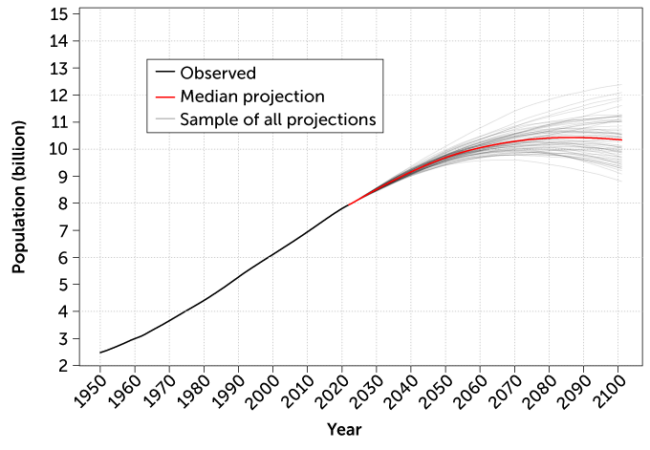Eight billion. That’s the number of people thought to be sharing our Earth right now.
The global population likely hit this landmark on November 15. It’s based on a report called World Population Prospects 2022. The United Nations issued it in July.
Though the global population is still rising, the rate of growth has slowed. An earlier prediction was based on the rate of growth in 2017. At that time, the U.N. predicted that the world’s population could reach 11.2 billion by 2100. Now, the population is expected to peak in the 2080s — at about 10.4 billion people. After that, it may hold steady until 2100.
The milestone “brings important responsibilities,” said Maria-Francesca Spatolisano of the United Nations. She was speaking at a news conference on July 11. It also highlights the many challenges linked to population growth, she said. Those include meeting people’s social and economic needs. Other issues relate to how people use Earth’s resources and alter the environment.
Population growth isn’t the same the world over. The U.N. analysis looked at trends in different places. High-income countries will grow due to more people moving there, the report predicts. In lower-income countries, populations will rise because there are more births than deaths. And in 61 countries, populations are expected to drop by 1 percent or more between now and 2050.
John Wilmoth directs the U.N. Population Division in New York City. He also spoke at the July news conference. Estimates always have some uncertainty, he said. They’re no guarantee of what will happen. After all, many things affect birth and death rates and the movement of people from place to place. That leads to a wide range of possible outcomes.
Other differences between nations matter, too, Spatolisano said. Rapid growth in developing nations may intensify climate disasters, for instance. But the more developed countries — industrial nations — typically use the most resources per person. So, she notes, these countries “bear the greatest responsibility” for finding ways to sustain the Earth’s resources even as populations grow.



